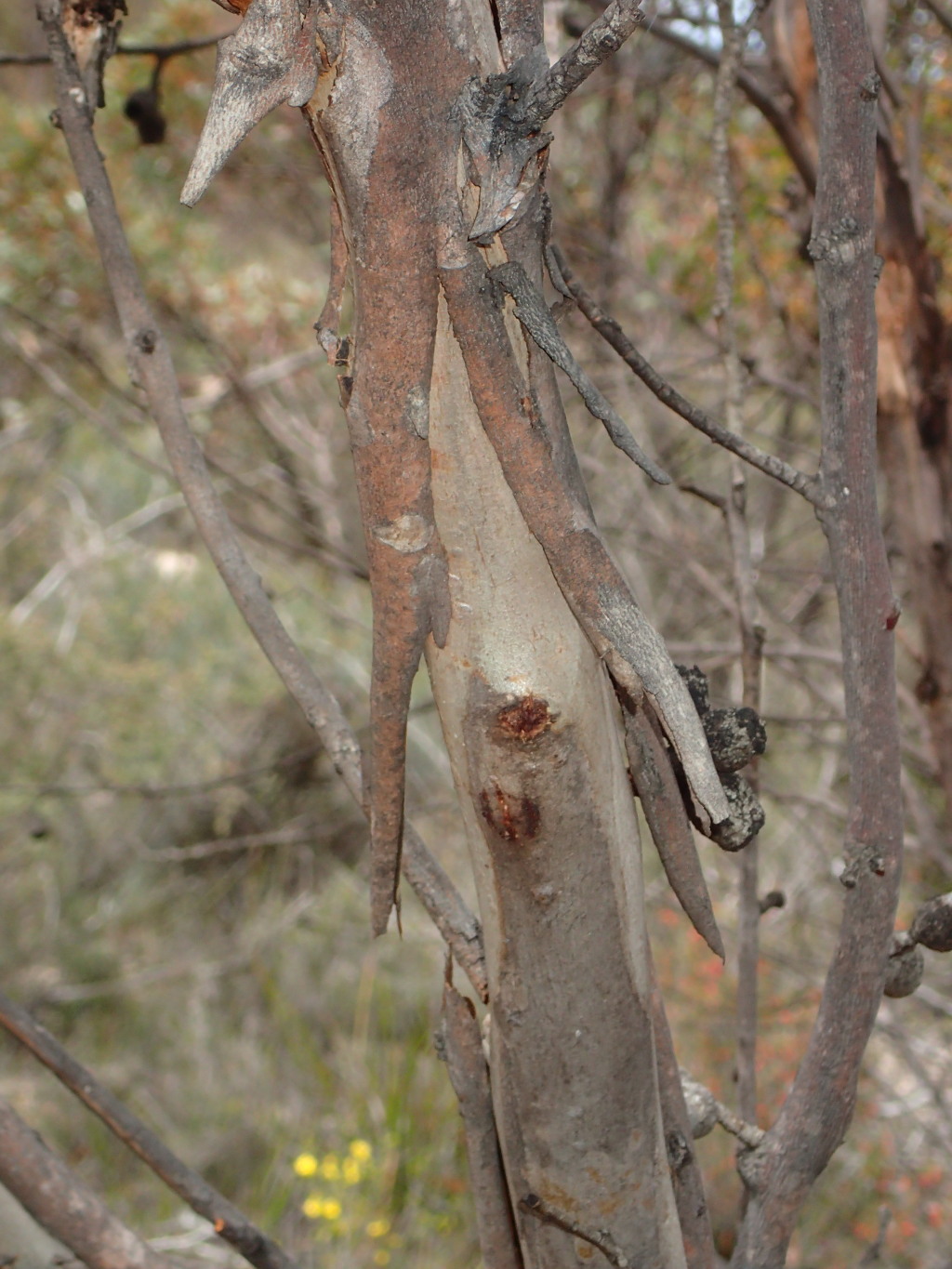Eucalyptus costata
F.Muell. & Behr ex F.Muell.Mallee; bark smooth throughout, or with persistent ribbons of bark on basal 1 m of stems, or rough at base. Pith of branchlets glandular. Juvenile leaves petiolate, alternate, elliptic to ovate, to 10 cm long, 5 cm wide, dull, blue-green; adult leaves petiolate, alternate, broadly lanceolate to lanceolate, thick, edges usually with minute black pustules, 7–11 cm long, 1.3–3 cm wide, concolorous, glossy, green; reticulation dense, ultimately fine, with numerous, large, irregular, intersectional oil glands. Inflorescences axillary, unbranched; peduncles flattened, to 2 cm long, 7-flowered; buds pedicellate, ovoid, to 2 cm long, 0.8 cm diam., scar present; operculum beaked; stamens inflexed; anthers dorsifixed, cuneate; ovules in 4 vertical rows; flowers white. Fruit pedicellate, cupular or contracted at the top, often ribbed, to 1.3 cm long, 1.3 cm diam.; disc descending; valves 3 or 4, below rim; seed grey to black, pyramidal, dorsal side smooth, underside with ribs ascending to hilum at summit. Flowers Oct.–Dec.
LoM, MuM, Wim, RobP, MuF, GipP, GGr.
2 subspecies, both in Victoria.
A somewhat poorly resolved species, which is not clearly distinguished from Eucalyptus incrassata Labill. and E. angulosa Schauer, with Victorian plants previously included in E. incrassata (see subspecies for futher notes). These species belong to a small series distinguished amongst the mallees by the thick leaves, large buds and fruit, and the seed characters given above.
 Spinning
Spinning
